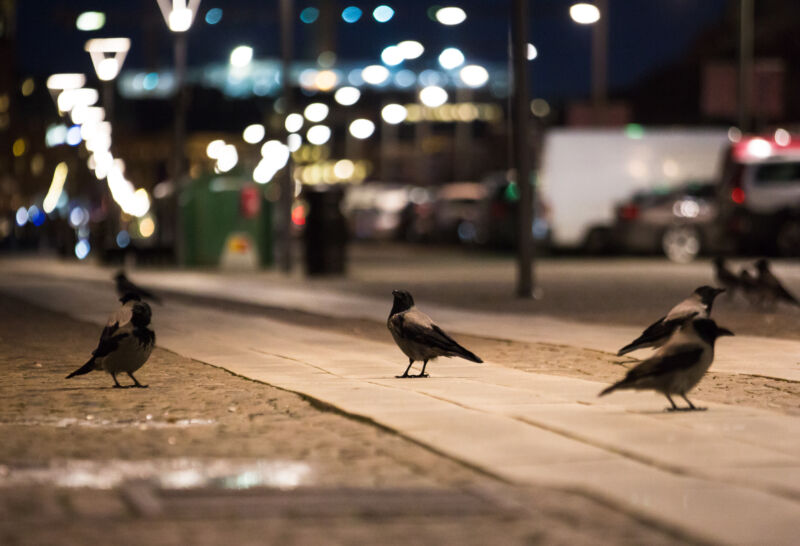What happens in a crow’s brain when it uses tools?

Enlarge / Sure, they can use tools, but do they know where the nearest subway stop is? (credit: Jonas Adner)
"A thirsty crow wanted water from a pitcher, so he filled it with pebbles to raise the water level to drink," summarizes a famous Aesop Fable. While this tale is thousands of years old, animal behaviorists still use this challenge to study corvids (which include crows, ravens, jays, and magpies) and their use of tools. In a recent Nature Communications study, researchers from a collaboration of universities across Washington, Florida, and Utah used radioactive tracers within the brains of several American crows to see which parts of their brains were active when they used stones to obtain food from the bottom of a water-filled tube.
Their results indicate that the motor learning and tactile control centers were activated in the brains of the more proficient crows, while the sensory and higher-order processing centers lit up in the brains of less proficient crows. These results suggest that competence with tools is linked to certain memories and muscle control, which the researchers claimed is similar to a ski jumper visualizing the course before jumping.
The researchers also found that out of their avian test subjects, female crows were especially proficient at tool usage, succeeding in the challenge quickly. [A] follow-up question is whether female crows actually have more need for creative thinking relative to male crows," elaborates Loma Pendergraft, the study's first author and a graduate student at the University of Washington, who wants to understand if the caregiving and less dominant role of female crows gives them a higher capacity for tool use.